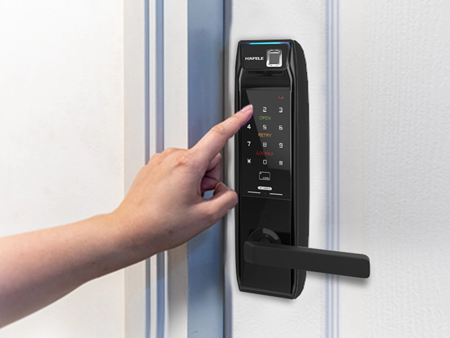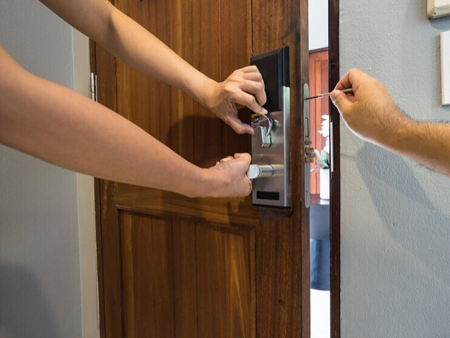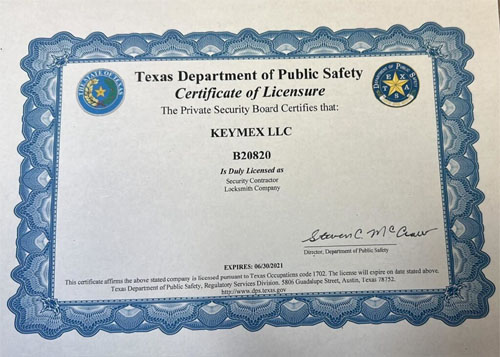When Technology Stumbles: Dealing with Electronic Lock Failures

In an age where technology governs many aspects of our lives, electronic locks have become a popular choice for securing our homes and belongings. These sophisticated devices offer convenience, flexibility, and enhanced security. However, like any technology, electronic locks are not immune to malfunctions or failures. So, what should you do when your electronic lock decides to act up? In this blog, we’ll explore some practical steps to take when faced with an electronic lock failure.
 Stay Calm and Assess the Situation: The first rule of thumb when dealing with any unexpected situation is to remain calm. Panicking won’t solve the problem and may even exacerbate it. Take a moment to assess the situation and determine the nature of the lock failure. Is the lock completely unresponsive, or is it displaying error codes? Is there a power outage or battery issue?
Stay Calm and Assess the Situation: The first rule of thumb when dealing with any unexpected situation is to remain calm. Panicking won’t solve the problem and may even exacerbate it. Take a moment to assess the situation and determine the nature of the lock failure. Is the lock completely unresponsive, or is it displaying error codes? Is there a power outage or battery issue?- Check the Power Source: Many electronic locks rely on batteries or electrical power sources to function. If your electronic lock suddenly stops working, the first thing to check is the power source. Replace the batteries with fresh ones or ensure that the lock is properly connected to a power outlet. If there’s a power outage, wait for the electricity to be restored, or consider using a backup power supply if available.
- Refer to the User Manual: Electronic locks come with user manuals that provide troubleshooting tips and guidance for resolving common issues. Consult the user manual for your specific lock model to troubleshoot the problem systematically. Look for troubleshooting sections that address issues such as keypad malfunctions, motor failures, or connectivity problems.
- Try Manual Override Options: Many electronic locks are equipped with manual override features that allow you to bypass electronic functions and open the lock manually. These override options may include mechanical keys, emergency access codes, or backup keypads. Refer to the user manual or contact the manufacturer to learn how to access and use these manual override options effectively.
- Contact Customer Support: If you’re unable to resolve the electronic lock failure on your own, don’t hesitate to reach out to the manufacturer’s customer support or technical assistance hotline. They may be able to provide remote troubleshooting assistance or arrange for professional repair services if necessary. Be prepared to provide them with relevant information such as the lock model number, error codes, and details of the issue.
 Consider Professional Repair or Replacement: In some cases, electronic lock failures may require professional repair or replacement of the lock components. If the lock is still under warranty, contact the manufacturer to inquire about warranty coverage and repair services. If the warranty has expired or the lock is irreparable, you may need to consider replacing it with a new electronic lock or opting for a traditional mechanical lock as an alternative.
Consider Professional Repair or Replacement: In some cases, electronic lock failures may require professional repair or replacement of the lock components. If the lock is still under warranty, contact the manufacturer to inquire about warranty coverage and repair services. If the warranty has expired or the lock is irreparable, you may need to consider replacing it with a new electronic lock or opting for a traditional mechanical lock as an alternative.- Implement Backup Security Measures: While electronic locks offer advanced security features, they are not infallible. It’s essential to have backup security measures in place to ensure access to your property in case of electronic lock failures. This may include spare keys hidden in secure locations, alternative entry points such as secondary doors or windows, or a secondary locking system as a contingency.
Conclusion:
encountering an electronic lock failure can be frustrating and inconvenient, but it’s not the end of the world. By staying calm, troubleshooting the issue systematically, seeking assistance when needed, and implementing backup security measures, you can effectively deal with electronic lock failures and regain access to your property with minimal hassle. Remember, preparation and proactive measures are key to overcoming unexpected challenges in the realm of technology.

 Stay Calm and Assess the Situation: The first rule of thumb when dealing with any unexpected situation is to remain calm. Panicking won’t solve the problem and may even exacerbate it. Take a moment to assess the situation and determine the nature of the lock failure. Is the lock completely unresponsive, or is it displaying error codes? Is there a power outage or battery issue?
Stay Calm and Assess the Situation: The first rule of thumb when dealing with any unexpected situation is to remain calm. Panicking won’t solve the problem and may even exacerbate it. Take a moment to assess the situation and determine the nature of the lock failure. Is the lock completely unresponsive, or is it displaying error codes? Is there a power outage or battery issue? Consider Professional Repair or Replacement: In some cases, electronic lock failures may require professional repair or replacement of the lock components. If the lock is still under warranty, contact the manufacturer to inquire about warranty coverage and repair services. If the warranty has expired or the lock is irreparable, you may need to consider replacing it with a new electronic lock or opting for a traditional mechanical lock as an alternative.
Consider Professional Repair or Replacement: In some cases, electronic lock failures may require professional repair or replacement of the lock components. If the lock is still under warranty, contact the manufacturer to inquire about warranty coverage and repair services. If the warranty has expired or the lock is irreparable, you may need to consider replacing it with a new electronic lock or opting for a traditional mechanical lock as an alternative.